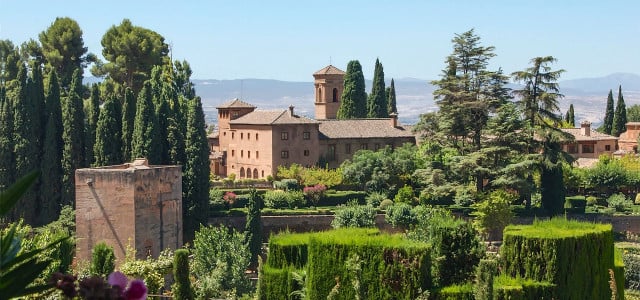Discover the revolutionizing garden city movement! Despite its challenges, sustainable, affordable and livable towns have sprouted up worldwide with garden city planning.
The garden city movement was developed in 1898 by the English town planner Ebenezer Howard. It was developed largely in response to the overcrowding, pollution and increasingly poor quality of work and life resulting from the Industrial Revolution.
Howard’s idea was to create many small cities with city and country living elements. At a time when it was difficult to access the countryside and cities were looking more and more like slums, Howard argued that large cities were not sustainable and that another solution was needed.
Howard advocated for many small garden towns close enough to one another to make up a single larger city. Residents could spend time with loved ones in neighboring garden towns.
Note: the garden city movement and 15-minute cities are not the same things. While they share the goal of creating sustainable and livable cities, they differ in their approach. Read our article The 15-Minute-City: How Real Can It Be? for more information on that urban planning concept.
The Basics of the Garden City Movement
Ebenezer Howard’s original garden city proposal had six primary principles. They comprised the following:
- Planned dispersal, referring to the organization of industries and services offered within the individual towns. The plan was for the center of each town to have a large park with some surrounding shopping and residential areas. Offices and industry would be on the outer edges, and traffic would be highly organized throughout.
- Town size limit, limiting growth to keep towns sustainable. The small towns must be able to provide homes, social centers, goods and services for all.
- Amenities within a garden city movement town should include space for private gardens, as well as public green spaces and parkways.
- Town and country relationships, meaning each town should be surrounded by agricultural lands, allowing for farmers to live in and benefit from the town, and people to benefit from the fresh farmed goods and country life.
- Planning control, indicating that everything in a town’s framework should be meticulously planned, from roads to maximum occupants, building designs and garden landscapes.
- Neighborhoods would be complete, relatively external social entities from the rest of the town.
Garden City Examples



Two garden cities were built immediately, following Howard’s designs. The first was the 1903 Letchworth Garden City, only 34 miles outside London. Following Howard’s principles, Letch worth incorporated a large green belt, many green spaces and rapid transportation to nearby industries. Each community had 12,000 to 18,000 people, and no cars were needed.
In 1920, Welwyn Garden City was founded, just 20 miles from Kings Cross in London. This 2,400-acre town was home to a population of 4,000. It had a large parkway, a central shopping mall, a beautiful town center and agricultural lands on the outskirts.
The garden city movement quickly spread worldwide, in particular gaining popularity in the US. Examples of garden cities in the US include:
- Residence Park in New Rochelle
- Woodbourne in Boston
- Virginia’s Hilton Village
- Pittsburgh’s Chatham Village, and
- several areas of New York, particularly in Queens
Advantages of the Garden City Movement



Garden cities offer a host of advantages that make them a desirable alternative to overcrowded and unsustainable urban areas. They offer employment opportunities, schools, goods and services that one can find in a bigger city. Here are just a few of the major benefits:
- Social connections: Garden cities prioritize community and social connections, creating a strong sense of belonging among residents.
- Access to nature: With abundant green spaces and natural areas, garden cities offer unparalleled access to nature, promoting physical and mental health.
- Sustainable living: Garden cities prioritize sustainability, reducing their impact on the environment and promoting eco-friendly lifestyles.
- Safe transportation: With bike paths and reliable public transportation options, garden cities offer safe and convenient alternatives to car commuting.
- Calm and peaceful environment: Garden cities are designed to promote peace and tranquility, with ample space and greenery to reduce stress and promote well-being.
Importantly, garden cities are more sustainable than large cities as they prioritize the well-being of people and the environment, meaning they don’t put as much of a strain on natural resources. They are calmer and more peaceful due to the abundance of nature and space. Furthermore, they reduce the human activities that contribute to air pollution and light pollution.
Criticisms of the Garden City Movement



Critics argue, however, that garden cities are inconvenient and unrealistic. Some question whether it’s even possible to build garden cities to the scale Howard proposed while maintaining appropriate land use.
One thing is certain – garden cities present a unique set of challenges and opportunities. Here are some key points to consider:
- Space limitations: With a rapidly growing global population, space is at a premium. The world population has increased exponentially since 1898, something Howard could not have accounted for. Many countries simply don’t have enough room for new housing development, making it difficult to create garden cities without sacrificing other important land uses.
- Integrated networks: To truly create a successful garden city, experts must consider how to integrate various systems and networks, including transportation, energy, and waste management. This requires careful planning and coordination.
- Financing challenges: One of the biggest challenges faced by the first two garden cities (see below) was financing. While Ebenezer Howard envisioned garden cities as a utopian oasis for all social classes, the reality was that housing still became too expensive for many blue-collar workers, and Howard’s economic plans proved ineffective.
What’s the Verdict?
Wondering if the garden city movement would work today? While the first two garden cities faced considerable financial challenges and didn’t achieve the socialist utopia their founder envisioned, academics still believe they’re a viable and sustainable option. The main challenge in all ambitious city planning is financing; however, with some adjustments, we may be able to create garden cities that prioritize sustainability, community and a high quality of life.
Read more:
- How to Start a Community Garden in 8 Steps
- Suburban Sprawl: Definition, Problems and Solutions
- The 10 Greenest Cities in the US
Do you like this post?









